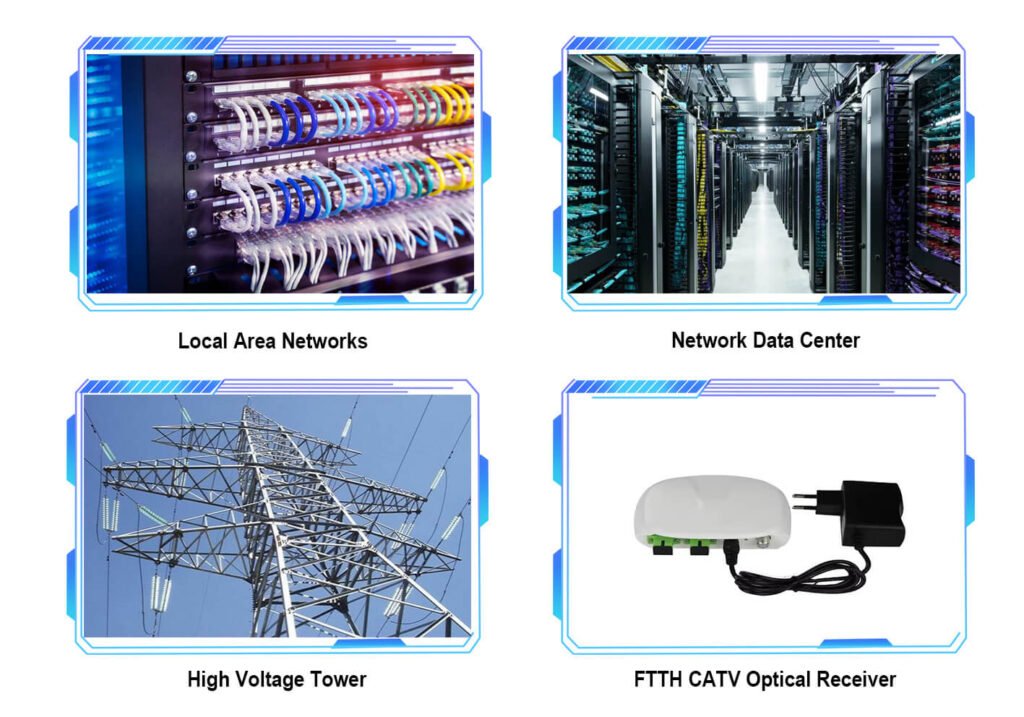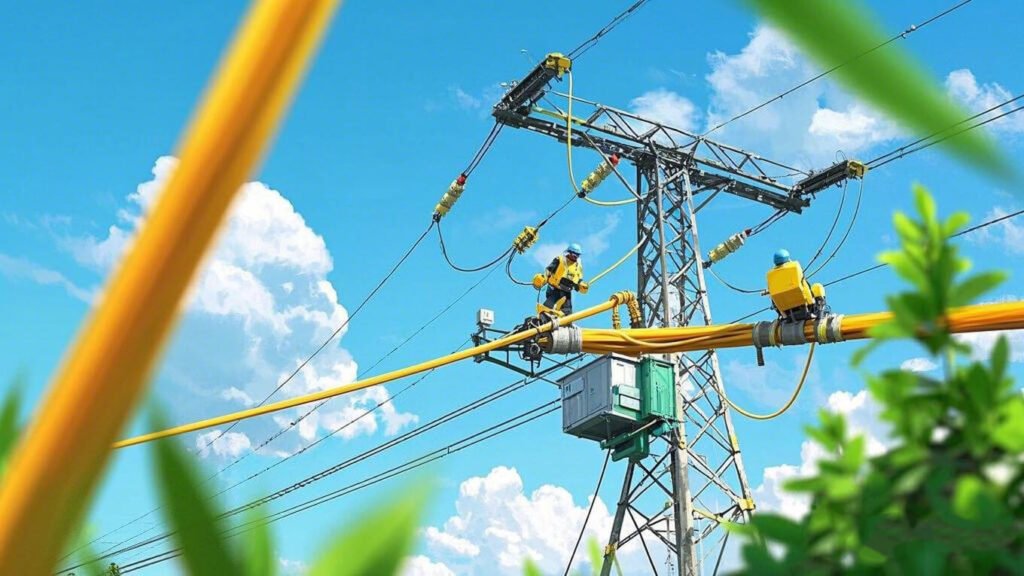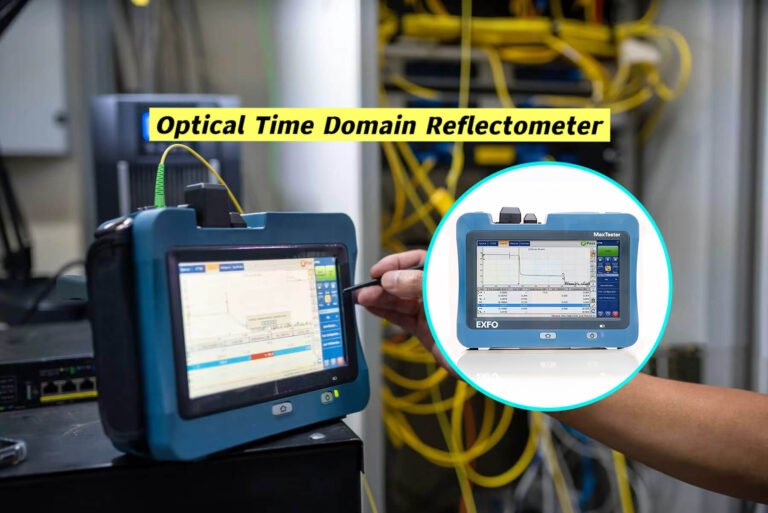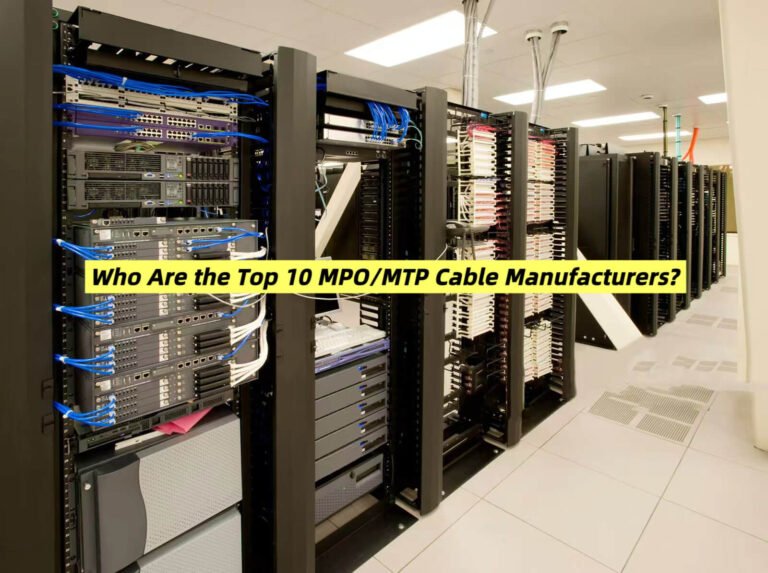What is OPGW Cable Used For?

In the rapidly evolving world of telecommunications and power transmission, there’s a growing need for solutions that combine efficiency, durability, and multi-functionality. Enter Optical Power Ground Wire (OPGW) cables1—a technology that addresses these needs in a single, integrated solution.
As someone who has spent years in the optical communications industry, I’ve witnessed firsthand how OPGW cables have transformed the landscape of power and telecommunication infrastructure. The story of OPGW cables is one of innovation meeting necessity. As power grids expand and the demand for reliable telecommunications grows, the integration of grounding and communication functions in a single cable offers a compelling solution. But how exactly do they fulfill these roles, and what makes them indispensable in modern infrastructure?
OPGW cables2 are used for dual purposes: they serve as ground wires for high-voltage lines, protecting them from faults and lightning, and as optical fiber carriers, enabling high-speed data transmission for various telecommunication needs and power grid operations.
How Do OPGW Cables Provide Dual Functionality?
OPGW cables are a marvel of modern engineering3, combining the roles of traditional ground wires and optical fiber cables. This dual functionality is central to their widespread adoption in the power and telecommunications industries.
OPGW cables provide electrical grounding4, shielding high-voltage conductors from lightning and faults, while also enabling optical communication5 for data transmission, monitoring, and control of power grid operations.
Electrical Grounding
The primary role of OPGW cables is to act as ground wires. They are installed at the top of transmission lines, providing a direct path to the ground for any induced electrical charges. This function is crucial in shielding high-voltage conductors from lightning strikes and electrical faults, thus enhancing the reliability and safety of power lines.
I remember a project where we upgraded an old transmission line. The existing ground wires were insufficient, leading to frequent outages during storms. Implementing OPGW cables not only solved the grounding issues but also provided us with a robust data transmission medium. This dual benefit significantly improved both the power stability and the monitoring capabilities of the grid.
| Function | Description |
|---|---|
| Grounding | Protects high-voltage lines from lightning and electrical faults |
| Location | Installed at the top of transmission lines |
| Benefit | Enhances reliability and safety of power grids |
Optical Communication
Inside the robust exterior of an OPGW cable are optical fibers that facilitate high-speed data transmission. These fibers support a wide range of telecommunications applications, including:
Transmission Line Maintenance and Monitoring: Real-time data allows utility companies to perform predictive maintenance, reducing downtime and repair costs.
Telecontrol Signals and Communication: Essential for power system relay protection, ensuring the grid operates efficiently and safely.
Voice, Video, and Data Transmission: Serves both utilities and third-party users, enabling seamless communication.
Real-Time Monitoring and Control: Crucial for the operational efficiency of power grid operations.
Integrating these functionalities within a single cable exemplifies the efficiency and innovation of OPGW technology. During my tenure at ABPTEL, I’ve seen how leveraging OPGW cables has streamlined operations for our clients, providing them with a reliable backbone for both power and data needs.
| Optical Function | Application |
|---|---|
| High-Speed Data Transmission | Enables rapid communication for monitoring and control systems |
| Real-Time Monitoring | Facilitates immediate detection of faults and system anomalies |
| Predictive Maintenance | Allows for data-driven maintenance strategies to prevent outages |
| Telecommunication Support | Provides infrastructure for voice, video, and data services |

Why is Monitoring and Maintenance Important for OPGW Cables?
The ability to proactively monitor and maintain power lines is a game-changer for utilities. OPGW cables play a pivotal role6 in this process through distributed temperature sensing.
OPGW cables enable utilities to monitor power lines for potential issues like hotspots or damage, allowing for early intervention and preventing significant disruptions.
By providing real-time insights into the condition of power lines, these cables help identify trouble spots before they escalate, ensuring consistent power delivery and reducing the risk of outages. This capability is especially valuable in regions prone to extreme weather conditions or with aging infrastructure.
In one of our projects in Shenzhen, the implementation of OPGW cables allowed us to detect abnormal temperature rises in certain sections of the grid. This early detection enabled timely maintenance, preventing what could have been a major blackout affecting thousands of businesses and residents.
Distributed Temperature Sensing (DTS)
One of the key technologies enabled by OPGW cables is Distributed Temperature Sensing (DTS). DTS uses optical fibers to measure temperature changes along the length of the cable, providing continuous monitoring of the power lines.
How DTS Works
- Laser Pulses: A laser sends pulses of light down the optical fiber.
- Backscattered Light: The interaction of the laser with the fiber generates backscattered light.
- Temperature Detection: Variations in the backscattered light indicate temperature changes along the cable.
This method allows for precise temperature mapping, which is essential for identifying overheating components or potential fault areas.
| DTS Component | Function |
|---|---|
| Laser Source | Sends pulses of light through the optical fiber |
| Optical Fiber | Transmits the light pulses along the length of the cable |
| Detection Unit | Analyzes the backscattered light to determine temperature changes |
| Data Processing | Converts raw data into actionable information for maintenance |
Benefits of Proactive Monitoring
Proactive monitoring through OPGW cables offers numerous benefits:
- Early Fault Detection: Identifies issues before they lead to significant failures.
- Reduced Downtime: Minimizes the duration and frequency of outages.
- Cost Savings: Lowers maintenance and repair costs through targeted interventions.
- Enhanced Safety: Prevents hazardous situations caused by electrical faults.
How Do OPGW Cables Support Smart Grid Integration?
In the era of smart grids7, data is king. OPGW cables provide the communication backbone necessary for the exchange of data between various grid components.
By supporting data exchange in smart grids, OPGW cables enhance grid efficiency and reliability, enabling advanced functionalities such as real-time monitoring and automated response systems.
Smart grids rely on seamless communication between distributed energy resources, control centers, and consumers. OPGW cables facilitate this communication by providing a reliable and high-speed data transmission medium. This integration is crucial for implementing smart grid technologies that enhance energy efficiency, reliability, and sustainability.
Advanced Functionalities Enabled by OPGW Cables
Real-Time Monitoring
With OPGW cables, utilities can monitor grid conditions in real-time. This continuous data flow allows for immediate responses to changing conditions, such as fluctuations in power demand or unexpected outages.
Automated Response Systems
Smart grids equipped with OPGW cables can automate responses to detected issues. For example, if a fault is identified, the system can automatically reroute power to maintain service continuity without human intervention.
Data Analytics and Optimization
The vast amounts of data transmitted through OPGW cables can be analyzed to optimize grid performance. Predictive analytics can forecast demand patterns, enabling better resource allocation and energy distribution.
Case Study: Smart Grid Implementation
In a recent project in Canada, we integrated OPGW cables into a smart grid system for a large urban area. The result was a highly responsive grid that could dynamically adjust to real-time conditions, significantly reducing energy waste and improving overall reliability. The ability to collect and analyze data from various points in the grid empowered the utility to make informed decisions and implement targeted improvements.
| Smart Grid Function | Role of OPGW Cables |
|---|---|
| Real-Time Monitoring | Provides continuous data on grid conditions |
| Automated Responses | Enables automatic rerouting and fault isolation |
| Predictive Analytics | Facilitates data-driven optimization of energy distribution |
| Enhanced Communication | Ensures reliable data exchange between grid components |
Environmental and Mechanical Durability
OPGW cables are built to withstand8 the rigors of environmental stressors such as wind, ice, and other mechanical challenges. This durability ensures that they remain operational under diverse and challenging conditions, making them a reliable choice for both urban and remote installations.
Throughout my career, I have encountered various environmental challenges that could compromise the integrity of power and communication lines. OPGW cables have consistently proven their resilience, maintaining functionality even in the harshest conditions.
Resistance to Environmental Stressors
OPGW cables are designed with robust materials that provide excellent resistance to environmental factors:
- Wind: High tensile strength ensures that the cables can withstand strong winds without sagging or breaking.
- Ice: Anti-ice properties prevent the accumulation of ice, reducing the risk of cable damage during winter storms.
- UV Radiation: UV-resistant coatings protect the optical fibers from degradation caused by prolonged exposure to sunlight.
- Temperature Variations: The materials used can endure extreme temperature fluctuations without compromising performance.
Mechanical Strength
The mechanical strength of OPGW cables is another critical factor contributing to their durability. The cables are constructed with layers of protective materials that shield the optical fibers from physical damage. This construction not only prolongs the service life of the cables but also reduces the need for frequent maintenance.
In one project in the Middle East, the OPGW cables installed had to endure intense heat and sandstorms. The cables performed exceptionally well, maintaining both their grounding and communication functions without any noticeable degradation.
| Durability Feature | Benefit |
|---|---|
| Resistance to Wind and Ice | Ensures functionality in harsh environmental conditions |
| Mechanical Strength | Reduces maintenance needs and prolongs service life |
| UV Resistance | Protects optical fibers from sunlight-induced degradation |
| Temperature Resilience | Maintains performance across a wide range of temperatures |
Long-Term Reliability
The combination of environmental resistance and mechanical strength ensures that OPGW cables offer long-term reliability. This reliability is crucial for critical infrastructure where downtime can have significant economic and safety implications.
Installation and Maintenance of OPGW Cables
Proper installation and maintenance are essential to maximize the benefits of OPGW cables. My experience has taught me that attention to detail during these phases can prevent many common issues and ensure the longevity of the cables.
Installation Best Practices
- Site Assessment: Conduct a thorough assessment of the installation site to identify potential challenges and plan accordingly.
- Proper Tensioning: Ensure that the cables are tensioned correctly during installation to prevent sagging and mechanical stress.
- Secure Fastening: Use appropriate fasteners and supports to secure the cables, minimizing movement and vibration.
- Environmental Protection: Implement measures to protect the cables from environmental factors during and after installation.
Maintenance Strategies
Regular maintenance is crucial for sustaining the performance of OPGW cables. Key maintenance strategies include:
- Routine Inspections: Conduct periodic inspections to identify and address any signs of wear or damage.
- Cleaning: Keep the cables and surrounding areas clean to prevent debris buildup that could affect performance.
- Testing: Perform regular testing of both the grounding and optical functions to ensure they are operating correctly.
- Upgrades: Implement upgrades as needed to incorporate new technologies or address emerging challenges.
Troubleshooting Common Issues
Despite their durability, OPGW cables can encounter issues such as signal loss, physical damage, or grounding failures. Effective troubleshooting involves:
- Identifying the Problem Area: Use diagnostic tools to pinpoint the exact location of the issue.
- Assessing the Cause: Determine whether the problem is due to environmental factors, mechanical stress, or other causes.
- Implementing Solutions: Apply appropriate fixes, which may include repairing damaged sections, adjusting tension, or enhancing protection measures.

The Future of OPGW Cables in Telecommunications and Power Transmission
As technology continues to advance, the role of OPGW cables is set to expand even further. Emerging trends and innovations promise to enhance their functionality and applicability in various sectors.
Integration with Renewable Energy Sources
The global shift towards renewable energy sources, such as wind and solar power, requires robust and flexible infrastructure. OPGW cables can play a vital role in integrating these renewable sources into the existing power grid by providing reliable grounding and high-speed communication channels for monitoring and control systems.
Enhanced Data Capabilities
With the increasing demand for data, OPGW cables are being equipped with higher-capacity optical fibers. This enhancement allows for greater data throughput, supporting more advanced applications like Internet of Things (IoT) devices, smart city infrastructure, and high-definition video transmission.
Smart Infrastructure Development
The development of smart cities and intelligent infrastructure systems relies heavily on efficient data communication and reliable power transmission. OPGW cables are integral to this development, providing the necessary backbone for real-time data exchange and power stability.
Advancements in Cable Materials
Ongoing research into new materials is leading to the development of even more durable and efficient OPGW cables. Innovations such as lightweight composites and enhanced protective coatings are expected to improve the performance and ease of installation of these cables.
Conclusion
In an age where efficiency, cost-effectiveness, and reliability are critical, OPGW cables stand out as a versatile solution for both electrical grids and telecommunications networks. By merging the functionalities of grounding and optical communication, they offer a robust response to modern infrastructure challenges. As utilities and telecom companies continue to seek ways to optimize operations, the role of OPGW cables is likely to expand, driving advancements in smart grid technology and beyond.
Overall, OPGW cables are not just a technical innovation; they are a strategic asset in the pursuit of a more connected and resilient future. My journey with ABPTEL has reinforced the importance of such technologies, and I am excited to see how OPGW cables will continue to shape the industries they serve.
Footnotes
Provides an overview of the primary uses of OPGW cables, which serve both grounding and telecommunication purposes. ↩
Offers technical insight into OPGW cables’ dual role as both electrical ground wires and optical communication channels. ↩
Explains the role of OPGW cables in grounding high-voltage conductors against lightning and electrical faults. ↩
Details how OPGW cables facilitate high-speed data transmission for various telecommunication applications. ↩
Highlights the necessity of proactive monitoring and maintenance facilitated by OPGW systems to prevent power disruptions. ↩
Discusses how OPGW cables enhance communication and control in smart grid environments through reliable data exchange. ↩
Describes the environmental resilience of OPGW cables, emphasizing their ability to withstand harsh conditions. ↩
Explains the mechanical durability features of OPGW cables that contribute to their long-term reliability. ↩




